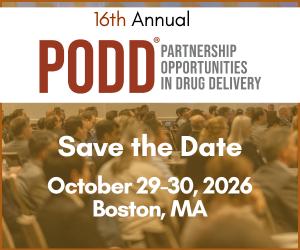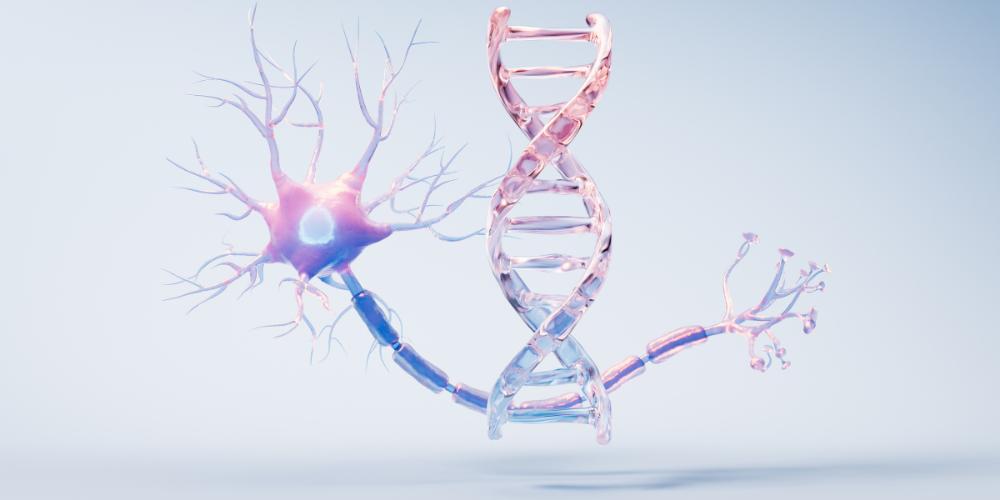
Can you tell us about the work you are leading at AstraZeneca?
I lead the Advanced Drug Delivery Department at AstraZeneca. We are a global organization of more than 100 diverse and creative employees on four sites across Sweden, UK and US. My team and I work on translating novel modalities and delivery concepts into clinical drug products.
In the discovery phase, we work on a range of modalities, including mRNA, small molecules, peptides, antisense oligonucleotides and small interfering RNA. In addition, we work on injectable new modality products up to Phase IIB. During the discovery phase, we develop the drug delivery strategy; once a candidate drug has been identified, we continue to develop and analyze the Phase I and II formulations.
What are the biggest delivery challenges in mRNA-based therapies?
Nucleic acid therapies such as mRNA are large, charged and cannot permeate the cell membrane on their own. This limitation can be overcome by encapsulating mRNA in lipid nanoparticles (LNPs), which then are taken up into cells and into the endosomal pathway transport system. The LNPs can be designed so that the mRNA cargo is released in the cytosol of the cell via the endosomal escape process. There, it meets the cells’ protein factories, the ribosomes. They read the code inherent in the mRNA and translate it into a disease modifying protein. This would not have been possible without the LNP delivery system. In addition to mediating cell uptake, the LNP protects against mRNA-degrading enzymes called nucleases that could otherwise degrade the mRNA before reaching its destination.
What are the biggest CMC challenges in mRNA- based therapies?
mRNA-based therapies, which include the mRNA cargo and the LNP delivery system, are still novel therapies although they served the world as vaccines during the COVID-19 pandemic. Therefore, pharmaceutical product development and manufacturing and regulatory frameworks are still developing for the novel components of these therapies. As a result, in addition to scientific innovation, pharmaceutical companies also must innovate the process of developing these new therapies.
A variety of barriers can slow development, ranging from raw material supply shortages, lead times to CROs/ CDMOs and additional safety or clinical studies required for novel components, just to name a few. On the other hand, there are upsides. The science community, academics, smaller technology companies and the pharmaceutical industry have learned to work together in new ways, resulting in creative new processes and helpful exchanges of information across collaborating partners.
Can you speak about your work in mRNA drug delivery for therapeutic purposes?
We work on drug delivery and formulation development for mRNA vaccines, protein replacement therapies and gene therapies in discovery and early development. At a high level, there are two steps to developing a nanoparticle- enabled mRNA formulation: selecting the right nanoparticle and developing it into a clinical drug product.
To fully solve the mRNA delivery challenge and deliver efficacious and safe formulations, it is important that we think outside of the box in how we work. The drive for better targeting and intracellular delivery of biomaterials such as mRNA has created a new discipline within AstraZeneca and in the science community as a whole: delivery chemistry. For example, for mRNA delivery and other applications, our polymeric and lipid chemists have driven design and use of novel lipids and polymers. More specifically, to rapidly screen novel materials and formulations for intracellular delivery, we have developed a high-throughput design, make, test cycle. This allows us to characterize formulations and their effect on cell uptake, endosomal escape and protein expression as well as cell toxicity leading to selection of safe and efficacious delivery systems for a variety of mRNA cargos.
To deliver an LNP-enabled clinical drug product, certain elements follow classic injectable product development, such as formulation optimization, performance, stability testing and batch release. However, there are novel aspects to developing an LNP formulation – including additional distribution and safety studies – since the delivery systems contain new excipients that may have biological effects regarding cell uptake and sub- compartment targeting. In addition, LNPs comprise of four excipients at minimum and therefore studying the interactions of these excipients with each other and the mRNA is critical to ensure product quality.
"Current estimates suggest that only a very small fraction of the mRNA delivered to the cell reaches the ribosome and gets translated into the active protein."
How do we increase efficiency and reduce cytotoxicity of mRNA formulations?
To design mRNA formulations with optimized efficacy and safety profiles, we should continue to study distribution and intracellular trafficking of mRNA-loaded delivery systems to better understand tissue and cell tropism, opportunities for active targeting and cell uptake and processing of these delivery systems in cells. Current estimates suggest that only a very small fraction of the mRNA delivered to the cell reaches the ribosome and gets translated into the active protein. As we gain increased understanding of these aspects, we should use this knowledge to enhance our material design and develop better delivery systems using novel polymers, lipids and polypeptides, for example.
What are some next steps for RNA delivery? Alternate routes of administration? New therapeutic areas?
Nanoparticles will often end up in the liver if no specific effort is made to make them go elsewhere. Since mRNA therapies are needed for a variety of targets in a range of tissues, in the future, I believe we will see further progress in delivering nanoparticles – notably LNP-enabled mRNA medicines – to tissues other than the liver. For example, delivering to organs outside immediate access to the systemic circulation, such as the brain, is a critical need.
A confounding factor for cell uptake is the protein corona, a coating of protein molecules that become absorbed on the surface of nanoparticles including LNPs as they travel through the body. The corona can direct the LNPs to cells and tissues, and hence we need to increase our understanding on this process and how we productively use it to enhance the tissue and cell tropism of delivery vehicles. This work is ongoing in Advanced Drug Delivery and at AstraZeneca elsewhere.
How do you see the field of cell & gene delivery evolving in the next 1-3 years?
With respect to gene therapies – today, we divide mRNA delivery systems in two: viral and non-viral. In the coming years, I believe we will see those two systems merge, to where we see virus-like particles that have partly inherited the simplicity of the LNPs and also the targeting or honing abilities of the virus delivery systems.
On the cell therapy side – today, many cell therapies are autologous such as CAR-T cells. In this context, the patient’s own cells are isolated, modified and then injected back, in other words, a truly personalized approach. This however gives rise to elaborate and difficult manufacturing processes, and hence the field has started to move towards allogeneic cells that can be used across multiple patients. I think this development will continue.
"In the coming years, I believe we will see those two systems merge, to where we see virus-like particles that have partly inherited the simplicity of the LNPs and also the targeting or honing abilities of the virus delivery systems."
Is there anything else coming in the gene delivery pipeline that excites you?
In addition to the evolution of the field stated above, I believe that we will also gain a better understanding of the stability governing factors for LNPs and other mRNA delivery systems. We know from the COVID-19 pandemic that the mRNA vaccines had to be stored at extremely cold temperatures. To make mRNA medicines globally available, this needs to be solved. And we have research currently underway in Advanced Drug Delivery and at AstraZeneca elsewhere to investigate solutions.








